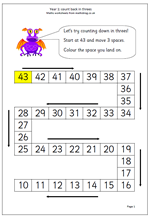Our resource of the week this week looks at early understanding of division. Division is usually the hardest of the four rules for children to learn, but in the early stages it is quite straightforward. Children often come across division for the first time when sharing, usually between two. The key concept,of course, is that the sharing is done equally. So, for example, 6 sweets shared between 2 children implies that the sharing is equal and they both receive the same number.
By far the best way to practice sharing is to use practical apparatus or use real life situations: e.g. share the strawberries equally between two, share or deal the cards equally etc. Usually this is done on a ‘one for you and one for me’ type process until there are none left. This maths worksheet replicates a practical situation, with the ultimate aim that children begin to remember the answers, which, of course are the inverse of multiplication.
Be careful when sharing that it is not always done into two, as some children begin to think that to share something it can always be divided by 2 and no other number.









